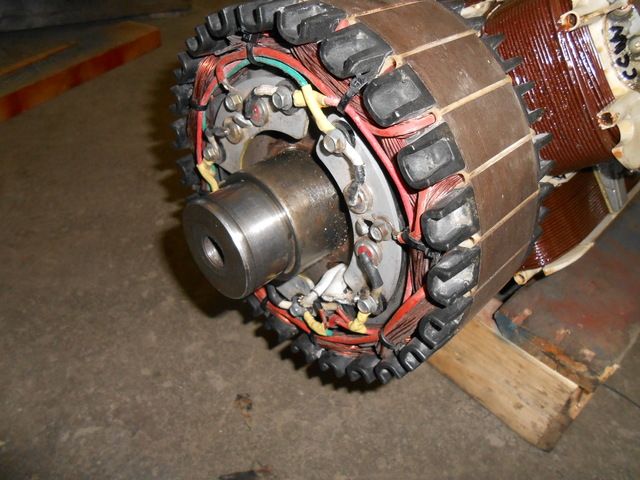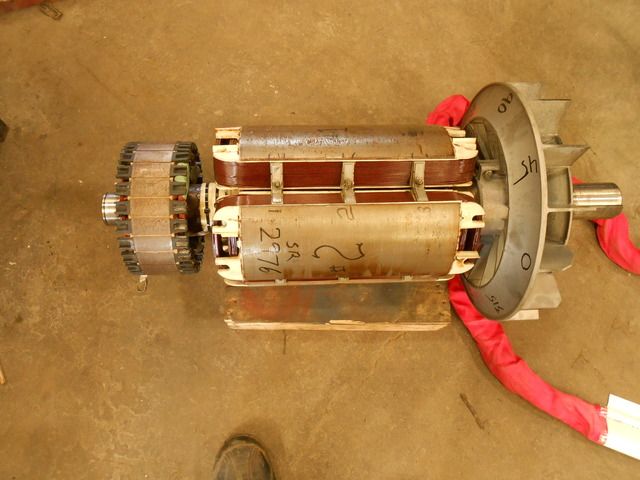Do brushless alternators cost more that those with brushes? Auto manufacturers are absolutely manic about reducing cost. If an alternator with brushes fails at 150,000 miles but costs $1 more than one without brushes that fails at 300,000 miles, I have no doubt that the 150,000 mile alternator will be used. Besides, they help their true customer and parter, the dealer, who may well do the replacement.
Do brushless alternators cost more that those with brushes? Auto manufacturers are absolutely manic about reducing cost. If an alternator with brushes fails at 150,000 miles but costs $1 more than one without brushes that fails at 300,000 miles, I have no doubt that the 150,000 mile alternator will be used. Besides, they help their true customer and parter, the dealer, who may well do the replacement.
@MikeInNH , so you’ve been lucky with alternators.
What’s your point?
Is there something special you do to make them last you want to share?
Alternators only have one brush, and since the commutator is smooth, unlike the ones in the starter, blower motor or old fashioned generator, the brush can last a very long time. You can make a brushless alternator by using a fixed magnet instead of an electromagnet, but then you lose the ability to regulate the voltage via the field coil.
Yeah, motorcycles typically use PMAs, and I don’t think I’d ever want one in a car, or anything that had to handle car-like electrical loads. Without variable electromagnetism, your alternator goes “all-out” 100% of the time, and you have to dump the excess current to ground.
They could use a series pass transistor(s) to regulate the output. That takes a serious transistor with a hugh heat sink, so not too good for high currents. Or you could use a switching regulator to get around the heat problem, with some more electronics.
“Without variable electromagnetism, your alternator goes “all-out” 100% of the time, and you have to dump the excess current to ground.”
Not necessarily, That may be how some motorcycles do it, but you can use a large power transistor in series with the load. Then you monitor the voltage at the load and feed back a portion to the base (or gate) of the transistor to increase or decrease emitter/collector current (resistance). By varying the resistance of the transistor, you vary the voltage drop across it and keep a constant voltage to the load.
And don't forget 5th will result in less engines revs per mile than 4th. Probably about 10% at a guess, so you get 10% less wear in 5th.
75% of engine wear happens as parts warm up, from start onward to operating temperature. Oil viscosity is out-of spec; clearances are off; acids from combustion are created and build up in the oil, causing corrosive wear. (One up to temp, they boil off.)
Once up to temp, at highway speeds, and running at a constant RPM/load setting, engine wear is (effectively) zero, at all sensible RPM and power load settings. 90%…of a number that is essentially zero…is so close to the original number that you may not even be able to measure the difference, over the life of the vehicle.
meanjoe, where do you get your numbers?
Here is one way to make a brushless alternator.
The small armature on the left of the main rotor is where the main field’s excitation current is generated. The small armature is surrounded by it’s own field coils that are similar to the field coils in a dc generator and the regulator powers these coils.
A close up view of the exciter generator and the set of diodes that rectify the 3-phase output of the exciter generator into DC for the main field.

My 1974 Honda 550 four had an automotive style alternator with a regulator, however, the coil that magnetized the rotating field did not rotate with the field and eliminated the need for brushes.
BITOG (bobistheoilguy) is where I heard it discussed. I’m getting it second-hand, but there is ample documentation of the phenomenon around. Google “engine start up wear percent” to get an idea of what I’m talking about.
Oh, and Bob Sikorsky talks about it in “Drive it Forever.” A bit dated, but still a good read.
What is BITOG?
I used to overhaul my alternators at about 70,000 to avoid failure. This meant brushes, bearings, voltage regulator, and diodes. I don’t think I ever had a brush failure and usually they were hardly worn. Voltage regulators and front bearings though were the more common failures.
@MikeInNH , so you've been lucky with alternators. What's your point?
It’s not luck…it’s typical of every one I know. Maybe you should buy more reliable vehicles.
Alternator failures are usually caused by diode failure, not brush wear and this is normally found in a city environment where air conditioning load and radiator fan load is high, not highway driving.
Where I work the most common alternator failures occur on Lexus ES330, ES350 and GX470 with less than 100,000 miles however my Dodge Stratus with 230,000 miles has the original alternator so vehicle choice may not be the key.
Alternator failures are usually caused by diode failure, not brush wear and this is normally found in a city environment where air conditioning load and radiator fan load is high, not highway driving.
Not to mention people who try to milk another month of life out of a battery with a dead cell by jump starting the car all the time.
City driving also means a lot of short trips so the alternator is constantly charging a battery that just started a car.
Generator regulators usually had a third relay that cut out the generator if the current was too high. I wonder why they did away with that on alternator regulators.
BITOG is “Bob Is The Oil Guy”. It’s a website frequented by car nerds like us where we argue endlessly about oil filters and oil while giving each other car advice on hundreds of other topics.
Where I work the most common alternator failures occur on Lexus ES330, ES350 and GX470 with less than 100,000 miles however my Dodge Stratus with 230,000 miles has the original alternator so vehicle choice may not be the key.
I guess my wife’s ES350 is about 80k miles past due then. If it fails it’ll be the first alternator I’ve had to replace in the past 30+ years.
HondaGuy70: It figures. A M/T car with no tachometer which is useful and A/T cars with a tachometer which is useless. I drive a 6 speed M/T. Between 35 and 40mph I use 4th gear which is about a 1 to 1 gear ratio. If I am driving 45 to 50mph for more than a mile it will be the only time I use 5th gear. Anything over 50mph is 6th gear. Yesterday I drove to the city. 6 miles on 2 lane state highway to the 4 lane state highway where I stopped to refuel. My average mpg display read 25.1. It automatically re-sets when I re-fuel. I pulled onto the 4 lane and accelerated briskly due to traffic shifting at 5,000rpm to 55mph. The average mpg display read 3.2mpg! Near full throttle is not kind to mpg. At the end of 8 miles in 6th gear at 55-60mph the display was 30.4 mpg. If you were “lugging” your engine. You would know it. Bucking and eventually stalling. If you find yourself needing more acceleration that’s what the shifter is for.
There are two papers on startup wear in the SAE archives. One was written in 1960 based on testing in the 50s and the other is newer based on testing done in 1995. Both tests involved irradiating the top compression ring and then testing for radioactive particles in the exhaust, so technically only the ring wear is being measured, not total engine wear.
It is interesting to note that in both tests, the time it took for the startup wear to taper off was 20 to 30 minutes after startup depending on the temp at cold start. But even after it did stabilize, there was still wear, it did NOT go to zero.
It is also interesting to see the different conclusions as to the reason for the wear. The earlier test blamed it on acids from combustion that would condense on the not yet warmed up engine or accumulated in the oil. In 1960, there was a lot of sulfur in gasoline so there was some formation of H2SO4 (sulfuric acid), but there were some other acids as well. Todays gasoline is mostly sulfur free so there is not nearly the amount of acid in the combustion process.
The overall wear in modern engines is much less and it looks like the removal of sulfur may have played a big part, but the pattern of wear remains the same.
My conclusion from this is that using the higher gear does save on engine wear, mainly because you spend a significant portion of the first 20 minutes crusing at speed, the wear is not all in the first 3 minutes.
One more interesting this is that in the 1995 test, the used PTFE in two of the test to see if it had any effect. You might be surprised at the result. You can read the first 5 pages of each of these papers at the links below. Most of the writing is in the first 5 pages, the rest is mostly graphs and tables backing up the writings.
